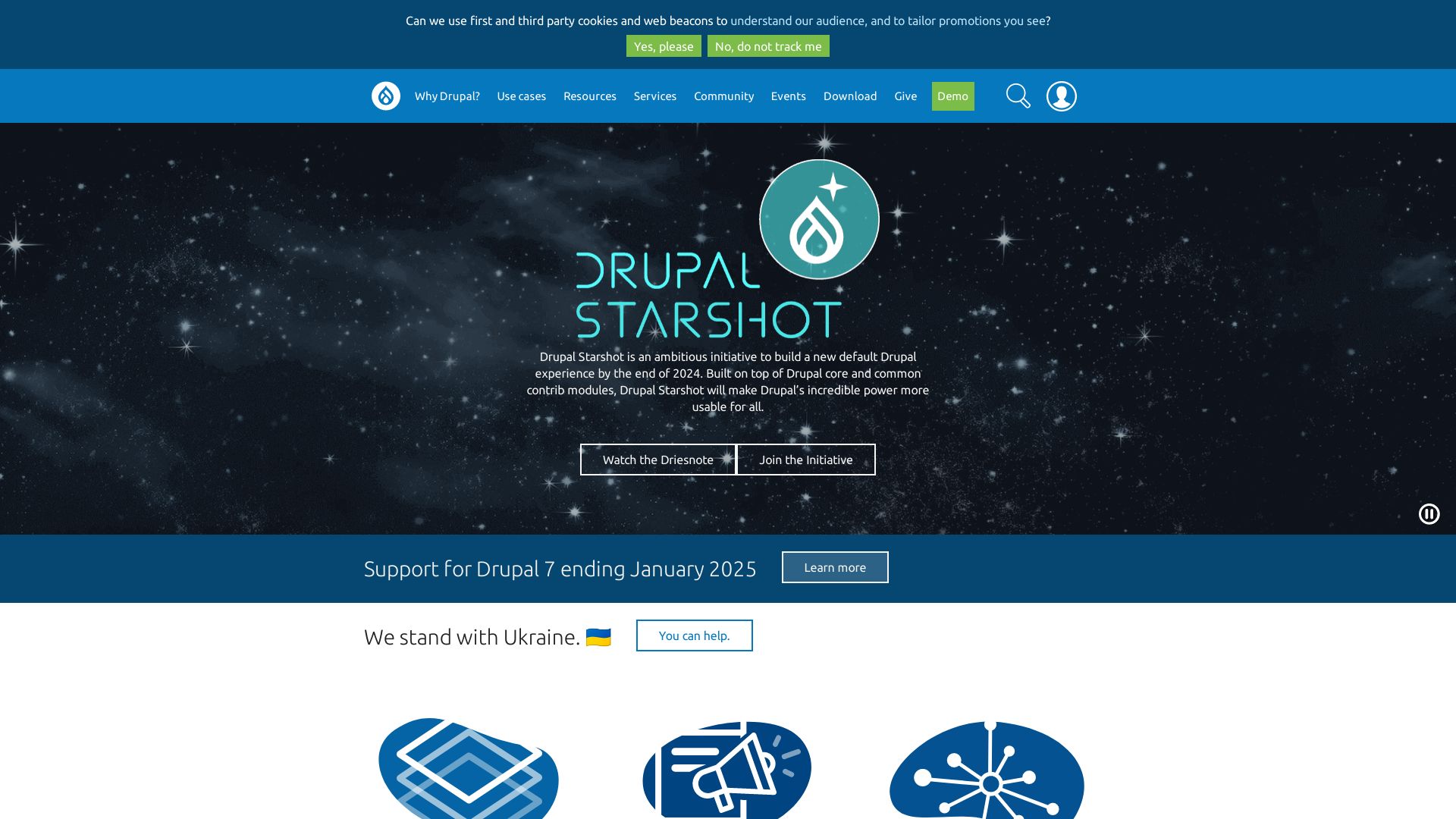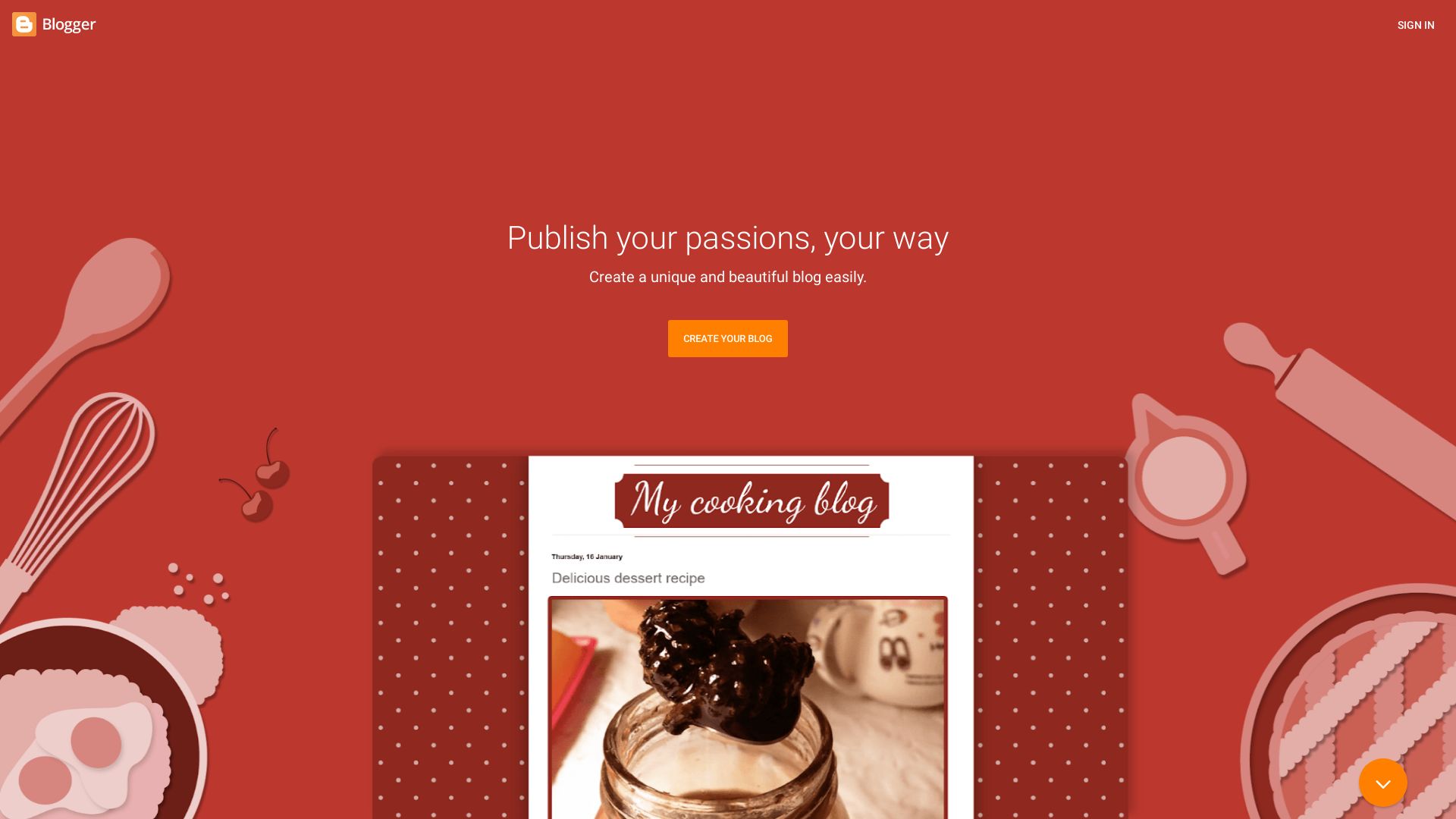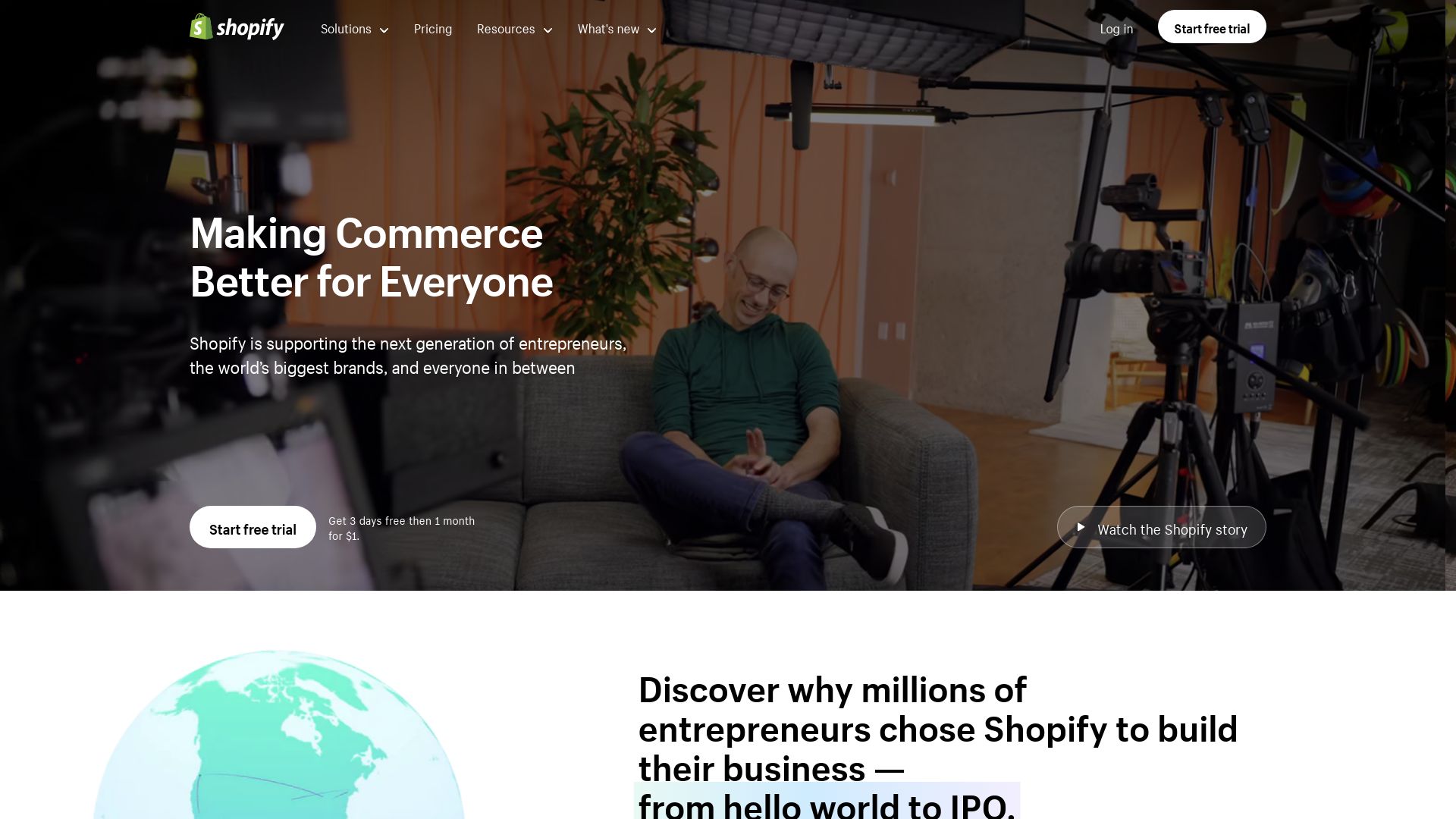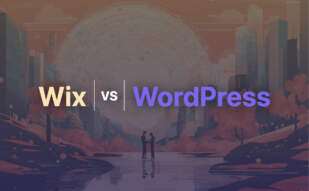
WordPress

A global powerhouse in the world of web development, WordPress powers a whopping 40% of all websites, holding a market share of 64% in the CMS landscape.
WordPress Top Features
- Custom Design and Development: With service costs that vary globally, WordPress offers ahigh degree of customization capable of catering to all your aesthetic preferences.
- WooCommerce: This plugin transforms your WordPress site into a fully functioning eCommerce platform.
- Additional Plugins: Get ample options for virtual product booking, upselling and pre-ordering.
- SEO Optimization: The Yoast SEO plugin makes your site highly SEO-friendly for a competitive internet presence.
- Automatted Features: Convenient automatic updates and testing environments ensure you have the latest security and functionality.
- Robust eCommerce Capabilites: Inventory management, real-time shipping prices, print labels, and tracking codes are all provided in detail.
| Feature | Benefit |
|---|---|
| Automated Payments | Easy subscription setup with the option to cancel at any time. |
| Elastic Search | A built-in feature that optimizes site performance and user interaction. |
| High-performance DNS with SSL | Ensures high site security and confidence for your visitors. |
WordPress Limitations
- Primary Focus: WordPress is not primarily an eCommerce CMS, which may limit certain functionalities.
- Plugin Compatibility: Occasional plugin compatibility issues may arise, requiring troubleshooting.
WordPress Pricing
WordPress provides a range options that cater to different budgets. Essential services such as domain registration and SSL could cost from $15 to $50 on a monthly basis. Additional expenses like custom design ($1,000-$10,000), custom development (from $25,000), and hosting (average $20 monthly) may also apply.
WordPress Use Cases
Use Case 1: Ecommerce
The WordPress ecosystem, empowered with WooCommerce, allows for the seamless creation and management of online stores. It’s well-equipped to handle product page customization, multiple payment gateways, and shipping options.
Use Case 2: Blogging
Known for its blogging capabilities, WordPress offers unlimited pages, user-friendly content editing, and the ability to easily roll back to previous post edits.
Use Case 3: Business Websites
WordPress provides enterprise-grade features like automated updates, staging site for testing, and strong SEO tools. Custom domain tailor-to-business needs, high-performance DNS with SSL, and easy-to-view site stats also make it suitable for business websites.
Joomla

A powerful and popular content management system (CMS), Joomla is celebrated for its extensive utility in building dynamic websites and applications. A trusted choice in professional web design services since 2009, it rings true as an ideal platform for business marketing and expansive online presence.
Joomla Top Features
- Empowers creation and management of any type of website, expanding into an e-commerce platform if required.
- Boasts an intuitive interface, simplifying feature utilization.
- Packed with the latest version of Joomla, ensuring optimal security, performance, and SEO practices.
- Adheres to W3C Accessibility guidelines, guaranteeing page accessibility.
- Easily customizable via numerous extensions, including over 6,000 Joomla extensions.
- Joomla 4 brings enhanced website features, increased speed, tighter security, and improved SEO.
| Feature | Details |
|---|---|
| Hikashop Extension | Joomla’s recommended add-on for easy product management, SEO optimization, and shipping options. |
| E-commerce Themes | Selectable e-commerce themes such as Splash, Yummy, Trendz are all SEO and translation-ready. |
| Framework | Architecture includes a front controller, frontend and backend interface for management, and built on a model-view-controller web application framework. |
Joomla Limitations
- Similar services provided by industry giants like Wix, Adobe Business Catalyst, and Agility.
- Intensive customization might demand a steep learning curve for beginners.
Joomla Pricing
Comprehending its prolonged usability, Joomla maintains a user-friendly approach in pricing. It is predominantly an open-source CMS, making it cost-effective and accessible.
Joomla Use Cases
E-commerce Stores
With its ability to morph into an e-commerce platform, Joomla is a great choice for businesses venturing into the e-commerce landscape, catering to ease in product management, SEO optimization, and diverse shipping options.
Business Marketing
A robust platform for establishments seeking to boost their online presence and implement focused marketing strategies. The variety of SEO-ready themes accelerates these marketing ventures.
Web Design Services
Joomla serves as a reliable tool for professionals in web design services, offering complete design, development, and digital marketing services for itself.
Drupal

Conceived by the minds of university students Dries Buytaert and Hans Snijder, Drupal swiftly rose to become a leading tool in eCommerce platform creation. With an extensive community support, Drupal can facilitate the creation of everything from business websites to complex eCommerce platforms.
Top Features of Drupal
- Customizable: With Drupal, developers find an array of options to modify and build user-driven sites.
- Global Support: It caters to global needs via its international currency, tax, and language features.
- Responsive Design: Drupal ensures that its eCommerce sites are mobile-ready.
- Open Source: Drupal’s open-source framework allows for integration with other software for seamless business automation.
- API-First: Drupal Modernization initiatives place it as a compelling choice for API-first applications.
| Feature | Details |
|---|---|
| Community Support | Backed by a massive network of 45,000+ developers. |
| Multilingual Support | Its inbuilt modules allow the creation of multilingual sites. |
| eCommerce Platforms | Offers eCommerce platforms Ubercart and Drupal Commerce. |
Limitations of Drupal
- The cost of Drupal website development can be high, depending on the degree of customization, website size, and project complexity.
- While Drupal has a modern framework, keeping up with rapidly evolving technology can be a challenge.
Drupal Pricing
Drupal Commerce, for instance, ranges between $20,000 and $100,000 depending on the project’s complexity.
Drupal Use Cases
Use case 1: Expanding businesses
Companies looking to expand their global reach can benefit from Drupal’s extensive language, currency, and tax support.
Use case 2: Developers and Designers
Developers and designers can leverage the extensive customization options offered by Drupal, allowing them to create unique, user-driven sites.
Use case 3: Multilingual eCommerce platforms
Companies planning to establish eCommerce platforms that can accommodate multiple languages can deploy Drupal’s inbuilt modules.
Squarespace
An all-encompassing website builder, Squarespace discerns itself with visually appealing templates and robust e-commerce functionality. It engages users through a seamless interface, extensive customization using Squarespace Blueprint, and a wide range of support services including 24/7 access to help.
Squarespace Top Features
- Expertly curated website templates designed for high visual appeal.
- Advanced Commerce plan offering features such as automatic discounts and abandoned cart recovery.
- Integrated shopping cart system supporting multiple payment gateways.
- Membership sites, community gating, and scheduling features for extensive customer engagement.
- Robust analytics tools to track visitor behavior and sales.
- Integrated email campaigns, social media marketing and SEO enabled platforms.
| Squarespace Commerce | Dedicated e-commerce platform with unlimited inventory management |
| Squarespace Blueprint | Customizable template designs for individualized websites |
| Squarespace Extensions | App store featuring a selection of functional apps |
Squarespace Limitations
- Limited app options in Squarespace Extensions.
- No transaction limit may lead to uncontrolled spending.
- Customer support restricted to email, Twitter, and live chat.
Squarespace Use Cases
Online Stores
Hosting an online store is made simpler with Squarespace. It offers a dedicated e-commerce platform, automatic transactional emails, and tax rule setup, catering to diverse e-commerce needs.
Scheduling and Appointments
Service-based businesses find value in Squarespace’s ability to schedule appointments, classes, and manage membership sites.
Businesses Needing Custom Website
Businesses can create distinctive websites with Squarespace, using options for customization and the Squarespace Blueprint feature.
Blogger

Introducing Blogger, an eCommerce platform armed with customer-centric design and enhanced user experience capabilities that take pride in being the emblem of business and product quality.
Blogger Top Features
- Design focused on user experience: Tailored towards a user-centric approach that guarantees easy use.
- Smart search feature: An intellectual search function speeds up product-find sessions.
- Brand identity: Representing the quality of your business and product through unified aesthetics and messaging.
- Emerging trends: Embracing a new wave of web development by using interactive layouts, dynamic pages, data-driven product recommendations, and more.
- Mobile design optimization: A design that beautifully caters to mobile devices, leading to higher engagement and conversions.
| Features | Benefits |
|---|---|
| Live chat | Immediate assistance resource enhancing customer satisfaction |
| Narrative storytelling | Utilized on product pages, an effective way to convey product value |
| Secure check-outs | Boosts customer confidence and ensures safety throughout the checkout process |
Blogger Disadvantages
Please note, Blogger, while having numerous benefits, has its limitations:
- No direct provision for handling large inventory stores
- High-quality team real-life photos may be difficult to source
Blogger Pricing
Blogger prides itself in providing an excellent platform. Information regarding its pricing structure has not been provided in the company summary.
Blogger Use Cases
Use case 1: Ecommerce stores with a mobile-first approach.
For eCommerce stores that prioritize their mobile-users, Blogger provides an efficient solution with mobile-design optimization, leading to increased engagement and conversions.
Use case 2: Brands looking to emphasize their identity
Blogger could be the perfect platform for brands focusing on accentuating their identity through unified aesthetics and messaging.
Shopify

A stellar choice for dependable eCommerce solutions, Shopify is recognized for its expansive catalog of pre-set templates. These prove highly cost-effective for eCommerce website design. However, there’s a pitfall in brand-specific aesthetics as Shopify does not offer custom website design services. For a customized façade, store owners must resort to third-party templates from Shopify or hire professional web design agencies.
Shopify Top Features
- Extensive range of pre-made eCommerce templates
- SEO: With 43% of eCommerce sales driven by search engines, Shopify plays an ace in terms of SEO.
- User Retention: Search function, discount & promo tools, carousel slides, mega menus, newsletter signups, wishlist features, and product reviews boost user engagement and retention.
- Design Choice: Native or headless builds provide flexibility in separating content storage from frontend display.
- Accelerated Launch: Shopify’s quick-launch solution by Eastside Co allows stores to launch in less than a month.
| Feature | Description |
|---|---|
| Custom Themes | Create distinct brand aesthetics with custom designs referenced by established Shopify stores. |
| Multiple Page Designs | Different page designs for varied needs- product pages, blog pages, & category pages included. |
| Choice of Design Companies | Several options like Metizsoft Solutions, Eastside Co, Blendcommerce, and OuterBox ready to cater design requirements. |
Shopify Limitations
- Absence of unique or brand-specific aesthetics in standard templates.
- Cost fluctuation with custom site design leading to higher overheads for store owners interested in a tailor-made design.
- Additional cost for individual page designs, custom functionality, and integration with custom ERP or CRM systems.
Shopify Pricing
Prices for Shopify can vary greatly based on needs. Expect a monthly subscription ranging from $29.99 to $299.99. Template and design services can start at $500, but more extensive design projects can push this cost up to $100,000 or more.
Shopify Use Cases
Use Case 1: eCommerce startups
Shopify’s user-friendly features and affordable price points make it optimal for fledgling eCommerce businesses on a tight budget.
Use Case 2: Established Shopify Merchants
Stores already on the Shopify platform benefit from advanced features and design options on the higher end of the pricing spectrum.
Use Case 3: Personalized Branding
For brands seeking a unique digital presence, Shopify’s customizable options allow for a distinctive, tailored aesthetic.
HTML
HTML, or Hypertext Markup Language, is the backbone of web content creation, supporting the structure of websites and aiding in data imports.
HTML Top Features
- Structural Integrity: HTML gives structure to webpages, catering for the division of the website into header, body, and footer.
- Interactivity: Incorporated with JavaScript, HTML aids in creating dynamic, interactive pages, enhancing user engagement.
- Visual Aesthetics: Working in tandem with CSS, HTML influences webpage layout, color schemes, and typography.
- Customization: With HTML, altering the physical presentation of the page becomes feasible, such as product display alterations with cursor movement or element rotation and scaling.
| Feature | Benefit |
|---|---|
| Embeddable CSS | Enables in-line, internal, or external addition of CSS to HTML documents for stylistic modifications. |
| Data Imports | Allows website maintenance and CMS integration, crucial for dynamic information updates. |
HTML Limitations
- Coding Knowledge: Requires understanding of HTML syntax and semantics.
- Limited Aesthetic Control: Although it aids in structure, HTML alone cannot create highly interactive and visually appealing webpages. It relies on CSS and JavaScript.
HTML Pricing
HTML, as an integral part of web design and development, is an open-source language and is available for free.
HTML Use Cases
Commercial Websites
HTML supports the formation of robust commercial websites, enhancing user interaction with dynamic content and improving lead generation.
News Portals
HTML’s CMS integrations make it ideal for news portals, where constant updates and data imports are required.
eCommerce Websites
With its customizability, HTML can structure compelling product displays on eCommerce platforms, catering for large inventories and varied item types.
React
React, a JavaScript Library birthed by Facebook, leverages its robust capacities for shaping interactive and high-performing web and mobile applications. Rooted in open-source origins, its component-centric geared towards superior UI/UX design discloses a more dynamic interaction with digital spaces. ReactJS made its grand entry into the tech world in 2011, under the innovation of Jordan Walke, a software engineer at Facebook.
React Top Features
- Superior UI/UX design via a component-based front-end library.
- JSX, a JavaScript syntax extension facilitating the integration of HTML structures within JavaScript code.
- A virtual DOM and one-way data binding for optimized performance.
- Server-side rendering, enhancing SEO-friendliness and application load times.
- Reusable UI components streamlining development and debugging processes.
| Year | Milestone |
|---|---|
| 2011 | React Deployment |
| 2015 | Introduction of React Native for mobile app development |
| 2018 | Release of React 16 |
| 2022 | Release of React 18 with major performance enhancements |
React Downsides
The complexity of JSX syntax and learning curve for beginners may pose some limitations in React’s adoption.
Pricing
React stands free of charge, emanating from its open-source roots.
React Use Cases
Use Case 1
Rich UI/UX design for web and mobile applications.
Use Case 2
Development of highly interactive applications with one-way data binding.
Use Case 3
Creating fast-loading applications with server-side rendering.
Hannah Stewart
Content writer @ Aircada, tech enthusiast, metaverse explorer, and coffee addict. Weaving stories in digital realms.





